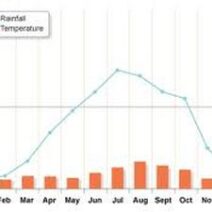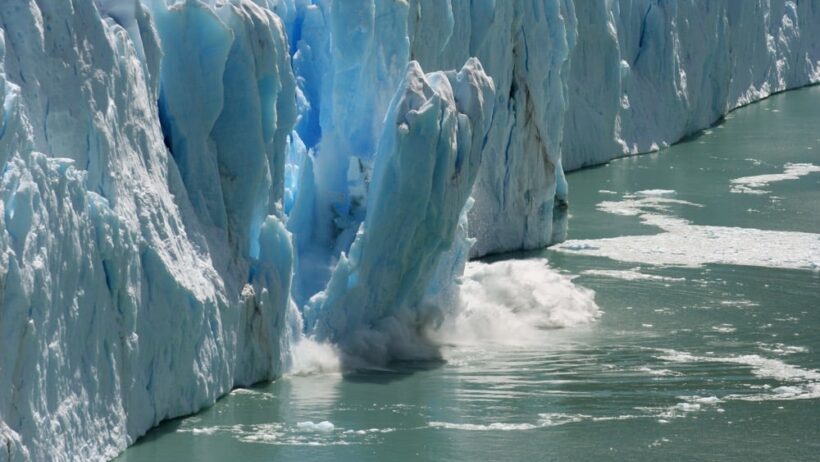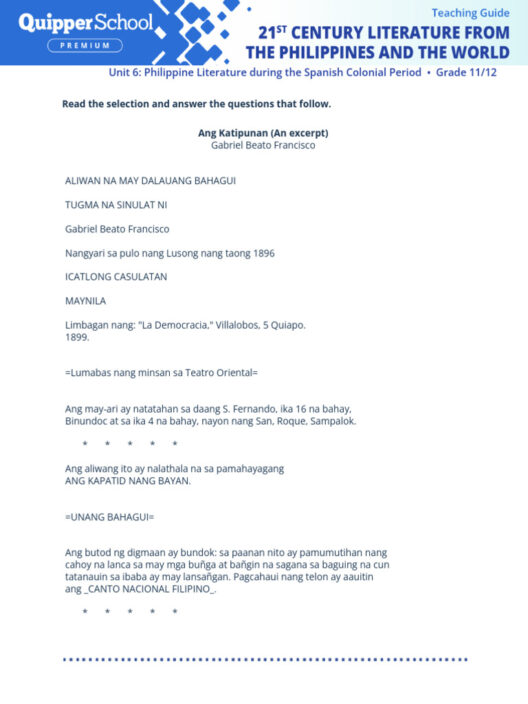The phenomenon of ice melting due to global warming is not merely an environmental concern; it is a harbinger of a cascade effect that can reverberate through ecosystems, weather patterns, and even global economies. To understand these intricacies, one must consider the multifaceted nature of glaciers and how their demise signals substantial changes both locally and globally.
Glaciers, often considered majestic sentinels of the Earth’s climate history, are immense bodies of ice that accumulate over millennia. They store approximately 69% of the world’s freshwater, acting as crucial reservoirs for countless ecosystems and human communities. However, as global temperatures continue to rise, these icy giants are succumbing to accelerated rates of melting. The implications of this meltdown extend beyond mere aesthetic loss; they catalyze a complex interplay of events that together form a cascade effect.
Initially, the melting of glaciers leads to rising sea levels. As ice retreats, the resultant water flows into the ocean, raising its levels. The Intergovernmental Panel on Climate Change (IPCC) has projected that sea levels could rise by over a meter by the end of this century if the current trend continues. This rise poses a grave threat to coastal communities, potentially displacing millions of individuals and bringing about socio-economic disruption. Coastal cities, like Miami and New Orleans, already exhibit signs of vulnerability; regular flooding, known as sunny day flooding, now shapes the living conditions for residents.
The implications of rising seas extend far beyond human habitation. Coastal ecosystems, including mangroves and salt marshes, play an indispensable role in biodiversity and act as carbon sinks. However, as salinity increases from encroaching salty waters, these vital habitats face degradation. The loss of coastal ecosystems not only diminishes biodiversity but also removes natural barriers that protect shorelines from storms and erosion. The result is an alarming increase in the vulnerability of inland areas to hurricanes and tropical storms.
Furthermore, the phenomenon of glacial melting contributes to an increase in freshwater availability, but it is a double-edged sword. Initially, this boost can benefit agriculture and hydroelectric power generation. However, as glaciers continue to recede, regions that depend heavily on glacial meltwater for irrigation and drinking water will eventually face scarcity. The Andean regions of South America, where many communities rely on glacial runoff, exemplify this precarious balance. Short-term gains in water availability may eventually yield devastating long-term consequences as glaciers disappear.
Beyond immediate hydrological effects, there is an intricate relationship between glaciers and climate regulation. Glaciers and ice sheets reflect sunlight back into space, a process known as albedo. This reflective capacity mitigates some of the heat that would otherwise be absorbed by Earth’s surface. As ice melts, darker ocean or land underneath is exposed, leading to greater heat absorption and further warming. It creates a vicious cycle; more heat melts more ice, which in turn raises temperatures further. This feedback loop accelerates climate change, contributing significantly to extreme weather events.
The psychological and cultural implications of melting glaciers are deeply profound. Many indigenous communities and cultures around the world view glaciers as sacred entities, fundamental to their spiritual identities. As these ice formations recede, the very essence of these cultures faces existential threats. The loss of glaciers transcends mere environmental degradation; it is a loss of history, narrative, and identity for those who have thrived alongside these natural wonders for generations. It is imperative that the global community recognizes the intrinsic value of respecting and preserving cultural heritages intertwined with the environment.
Climate change, through the melting of glaciers, also orchestrates changes in the planet’s biodiversity. These ice bodies serve as habitats for various organisms, including specially adapted flora and fauna. As temperatures rise, species are forced to migrate toward higher elevations or latitudes in a bid to preserve their habitats. This shift may lead to wildlife clashes, resulting in a scramble for resources that can precipitate extinction events. Similarly, the changing climatic zones can disrupt global migratory patterns, affecting avian species and other migratory wildlife that depend on stable seasonal cues.
Moreover, the melting of glaciers can affect regional economies, particularly those tied to tourism. Glacier-based tourism thrives on the natural allure of these icy landscapes, attracting adventurers and families alike. However, as glaciers recede and disappear, so too does the economic opportunity for the communities surrounding them. A cycle of declining revenue due to lack of tourism can ensue, leading to job losses and economic decline in previously thriving areas. These financial repercussions further implicate sociopolitical stability in regional contexts.
Engaging with the reality of melting glaciers compels individuals and nations to reevaluate their approaches to climate action. The transformation of glaciers offers a critical lens through which we can examine the broader impacts of human activity on the environment. It underscores the importance of sustainability and conservation, urging us to prioritize renewable energy sources, sustainable land management, and responsible consumption. The global community must unite to address the underlying causes of climate change, as the repercussions of inaction will undoubtedly extend far beyond the loss of glacier beauty. The cascading effects initiated by unforgiving climate conditions galvanize a narrative of urgency and action.
In closing, the journey from the icy embrace of glaciers to an uncertain climate future is fraught with challenges and opportunities. Melting ice serves as both a poignant reminder and a clarion call to rise and confront climate issues collectively. To protect the planet and its myriad inhabitants, we must strive to mitigate the effects of global warming. The cascading effects of ice melting demand our attention, underscoring that the time for action is now. The future of our planet, and the intricate web of life that thrives upon it, hangs in the balance.






